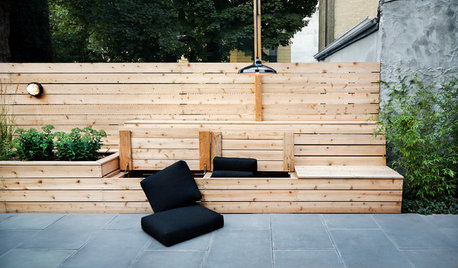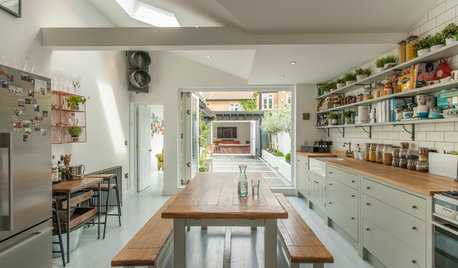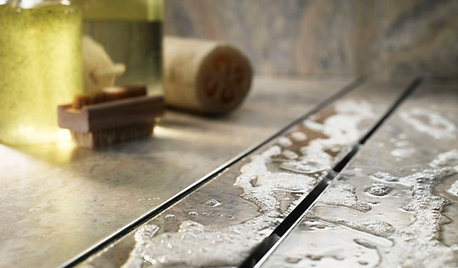What are the best drainage solutions?
sunkirst
9 years ago
Related Stories

GARDENING GUIDESGardening Solutions for Heavy Clay Soils
What’s a gardener to do with soil that’s easily compacted and has poor drainage? Find out here
Full Story
GARDENING GUIDES10 Solutions for Soggy Soil
If a too-wet garden is raining on your parade, try these water-loving plants and other ideas for handling all of that H2O
Full Story
ORGANIZINGThe Family Home: 8 Super Solutions for Shoe Storage
If scattered shoes are causing tripping, mess and chinks in your serenity, these storage systems can help restore order
Full Story
LANDSCAPE DESIGN8 Stylish Storage Solutions for Your Patio and Garden
See how to stash your outdoor cushions, rugs, tools and toys on a table, in a bench and even underground
Full Story
GARDENING GUIDESGardening Solutions for Dry, Sandy Soils
Has your desert or beachy site withered your gardening creativity? Try these ideas for a beautiful, easy-care landscape
Full Story
HOMES AROUND THE WORLDHouzz Tour: A 17th-Century Home Moves Up in the World
Intelligent design solutions and a respect for the building’s heritage create a welcoming home with character in London
Full Story
PRODUCT PICKSGuest Picks: Smart Storage for Collections and Craft Supplies
Organize to your heart’s content with creative solutions for keeping all kinds of things neat
Full Story
Guest Picks: Herb Gardens for Small Kitchens and Gardens
Up the wall, easily portable or beautifully decorative, these solutions help even the smallest kitchens and balconies get growing
Full Story
HOUSEKEEPING12 Cleaning Projects That Go a Little Deeper — Naturally
Eucalyptus oil for germy door handles. Baking soda for oven grime. Here are nontoxic solutions for often-overlooked cleaning jobs
Full Story
GARDENING AND LANDSCAPINGPrivacy Screening Made Pretty
Craving a secluded escape in your own backyard? Check out these stylish solutions for privacy walls and screens
Full StoryMore Discussions






wayne_5 zone 6a Central Indiana
sunkirstOriginal Author
Related Professionals
Mitchellville Landscape Architects & Landscape Designers · Sahuarita Landscape Architects & Landscape Designers · Brookside Landscape Contractors · Brunswick Landscape Contractors · Deer Park Landscape Contractors · Deerfield Landscape Contractors · Dunwoody Landscape Contractors · Mount Sinai Landscape Contractors · Quincy Landscape Contractors · Saint John Landscape Contractors · Four Corners Landscape Contractors · Shafter Landscape Contractors · Ansonia Landscape Contractors · Chicago Decks, Patios & Outdoor Enclosures · Framingham Decks, Patios & Outdoor EnclosuresMackel-in-DFW
Kimmsr
Mackel-in-DFW
klem1
Kimmsr
Mackel-in-DFW
Kimmsr
Mackel-in-DFW
Mackel-in-DFW